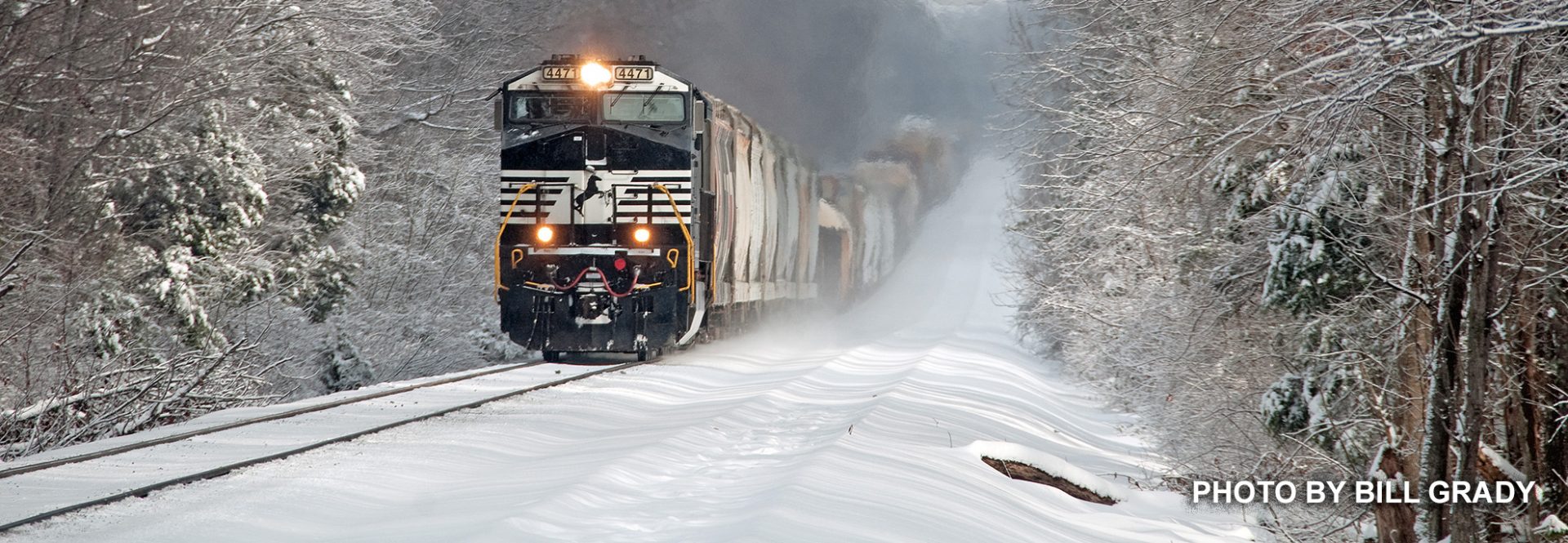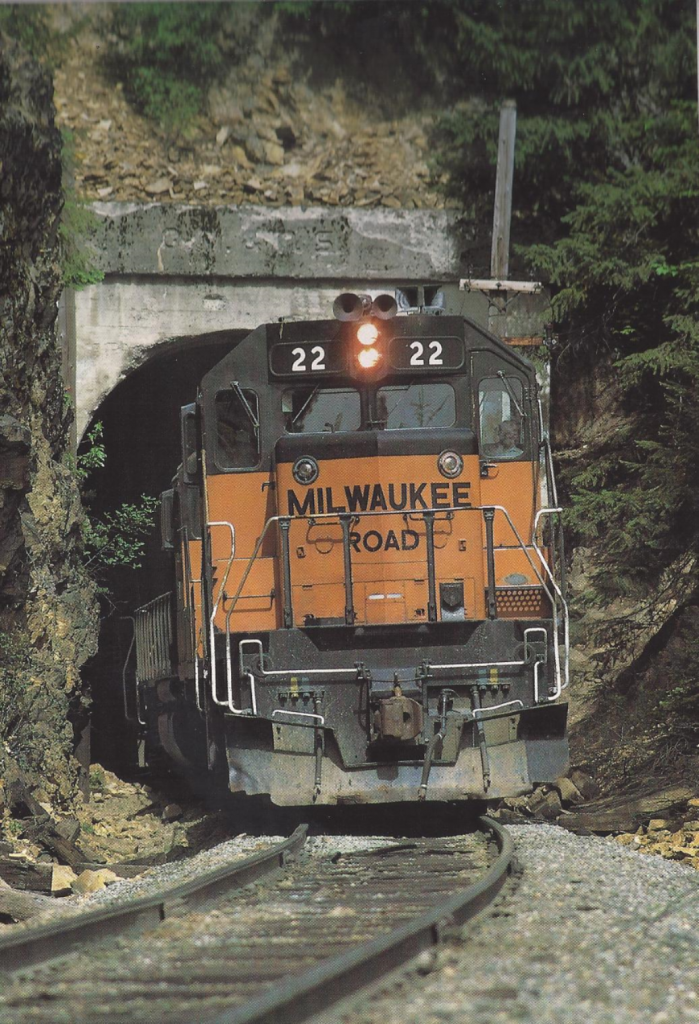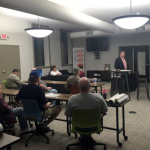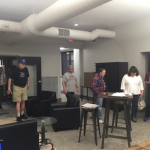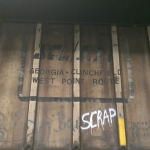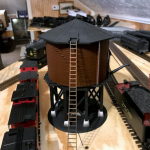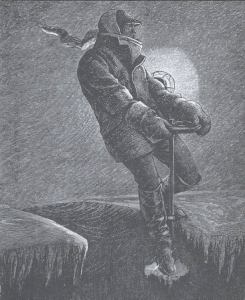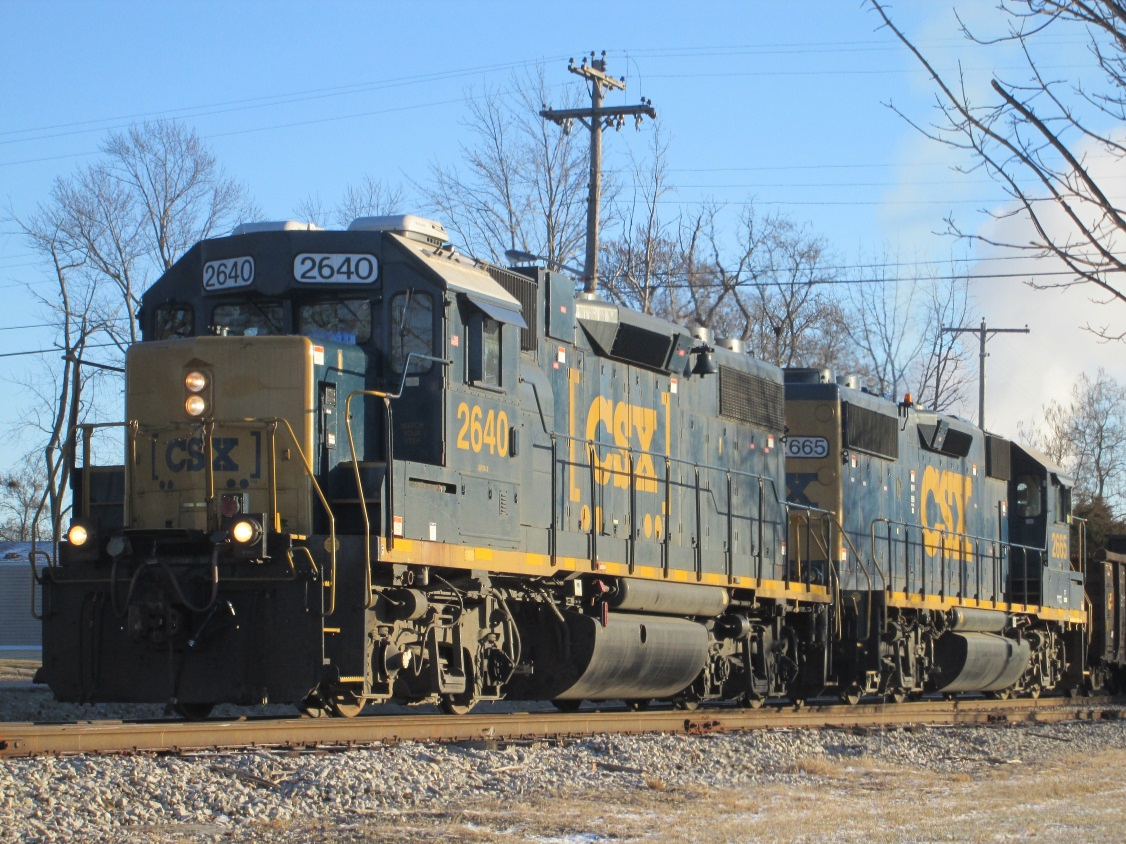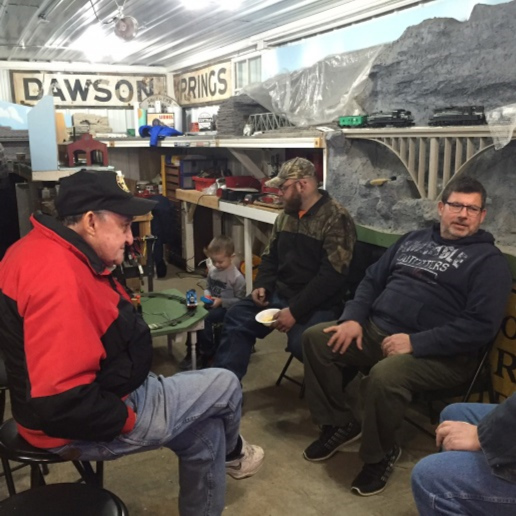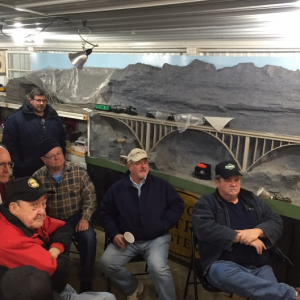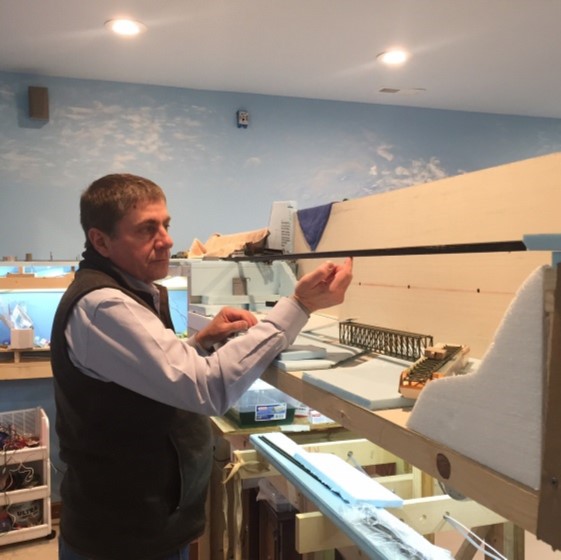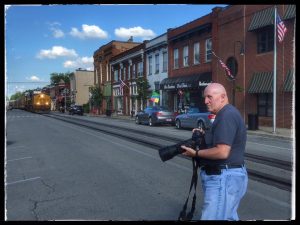Westbound #201, exiting tunnel 48, just west of Easton and about to cross the Yakima River. The river is entering Lake Easton. The Tunnel is only a hundred feet or so out of the picture to the right. I once drove my motor home through that tunnel. The bridges had been removed and I did a spectacular u-turn. Lots of maneuvering. As I exited the other end leaving I stopped short of the portal, got out and took a pix. A few weeks later they built a impassable berm, so the fun was over. The electrics ended here in 1972, 1974 in the Rockies. That is the former NP mainline leading up to Stampede Pass in the right coming under the Milwaukee.
All this right-of-way from Seattle to the Columbia River is State Parks trail system now. Obviously one must detour the bridge scene, but it’s easy because the MILW crossed back to the west side of the river in about another mile. So all you need to do is trespass on the BNSF. (I didn’t say that….) The BNSF (formerly NP) begins the 2.2 percent climb up to Stampede not far to the left out of the picture. Warren Wing, photographer, was a close friend of mine, he passed a few years ago. Enjoy.
